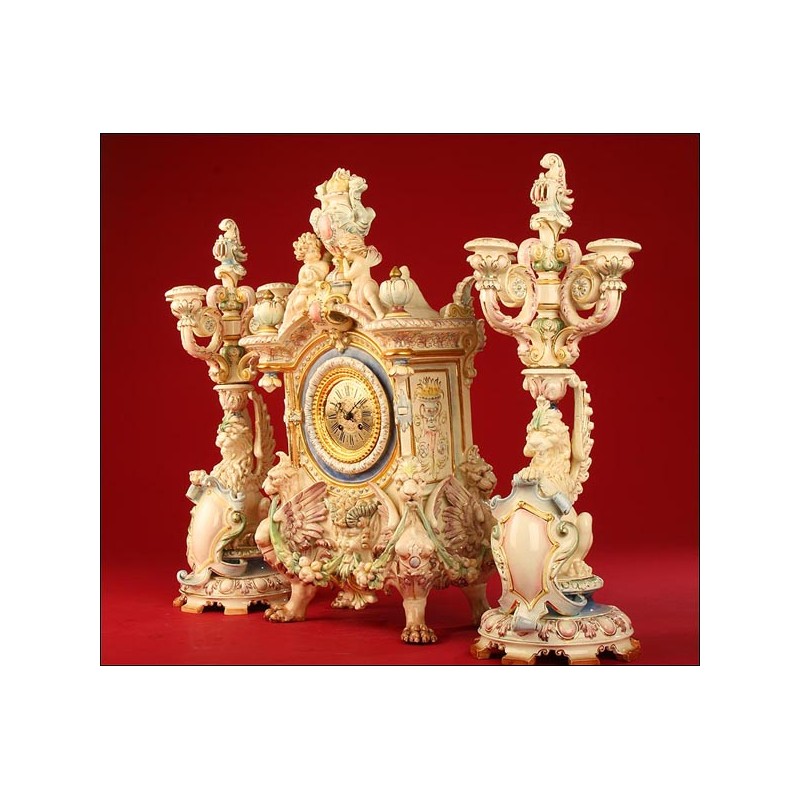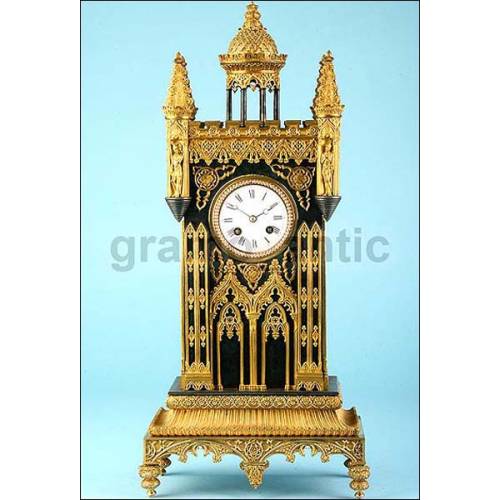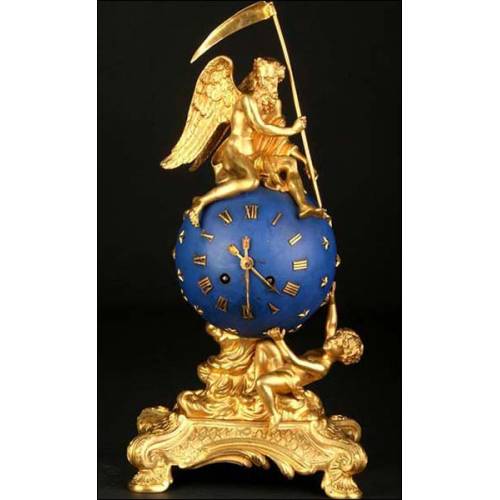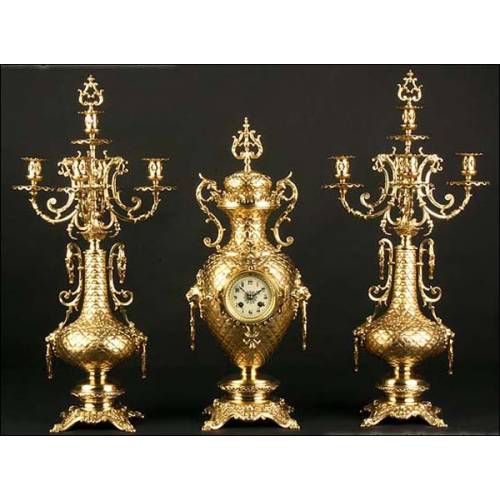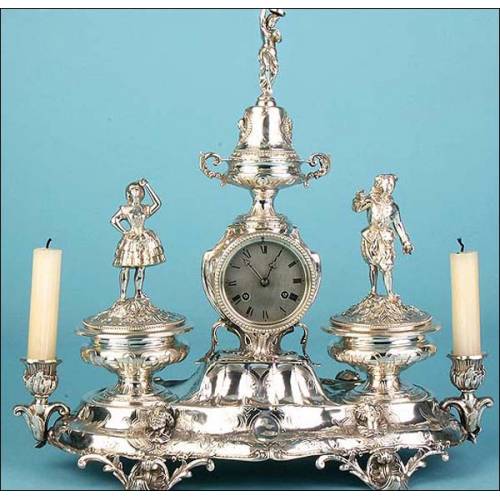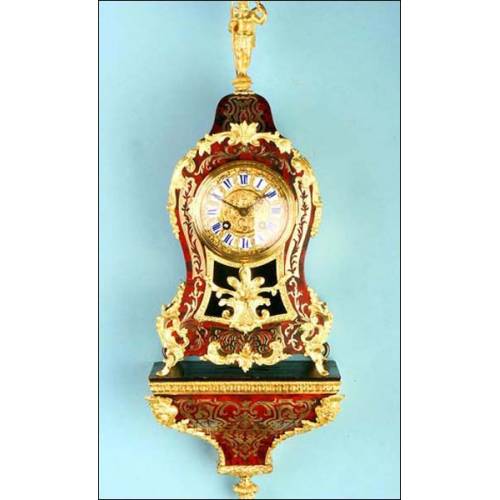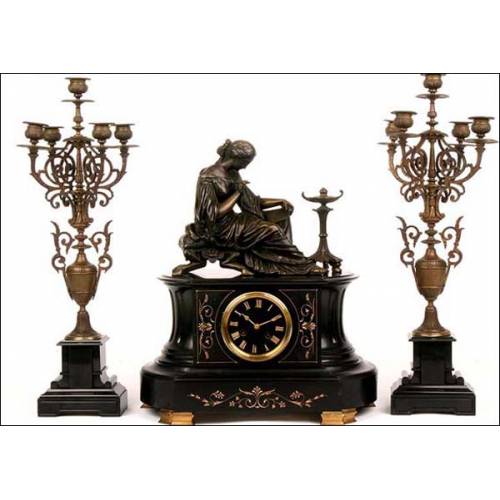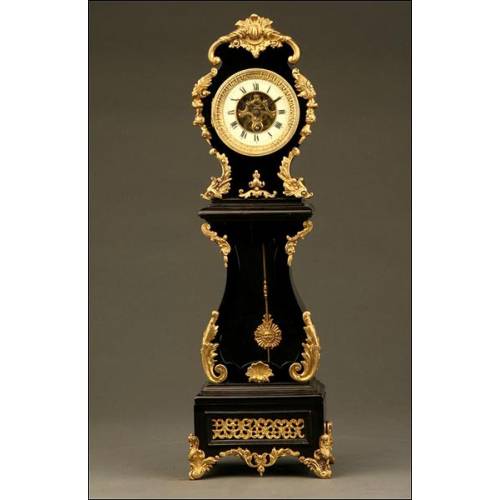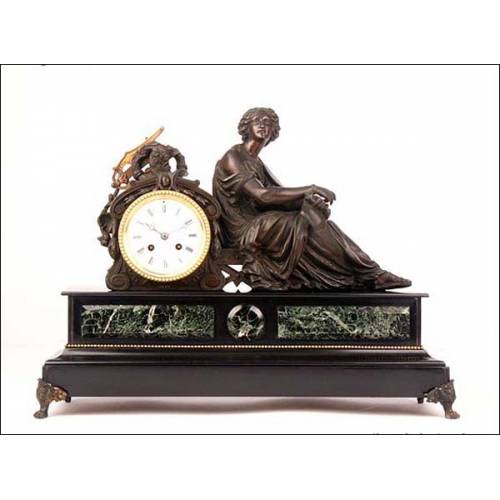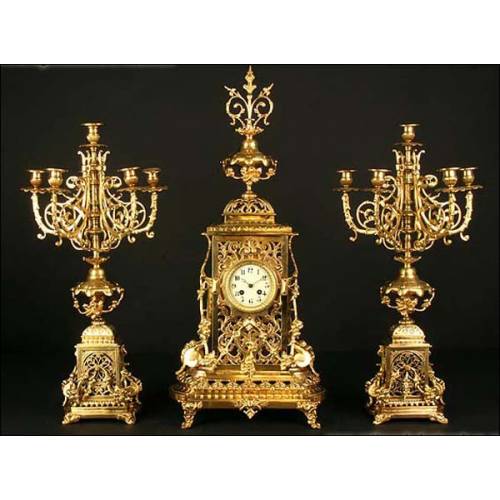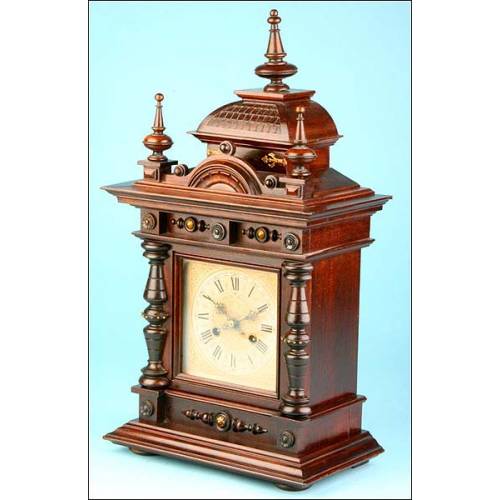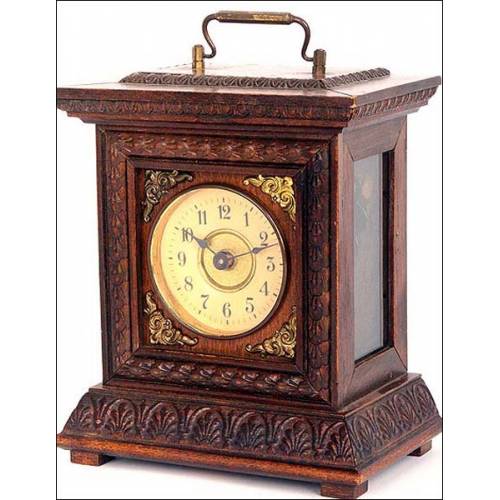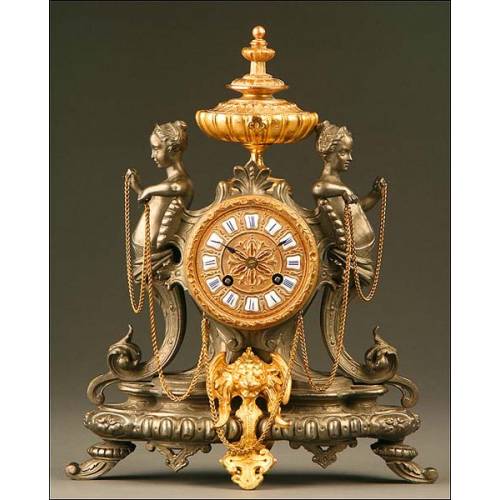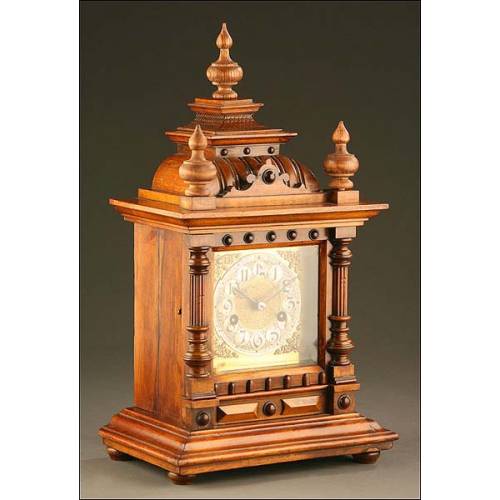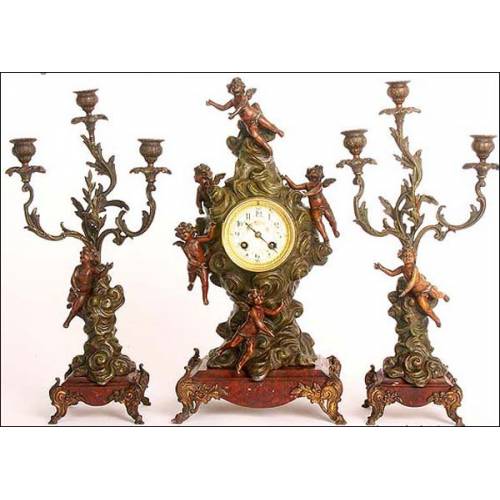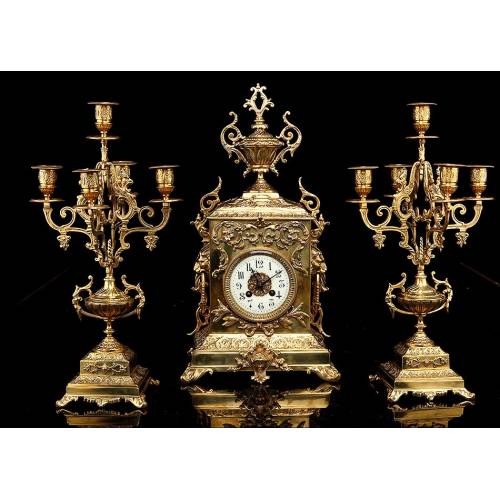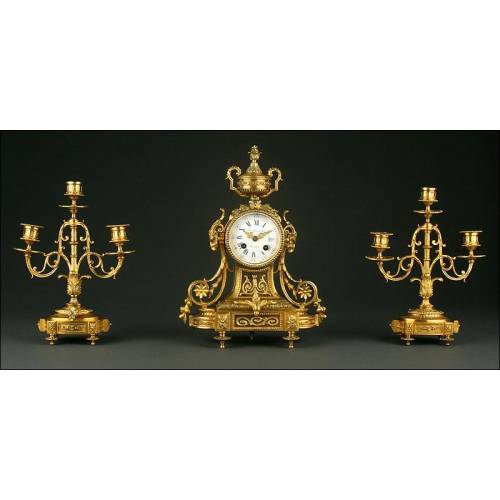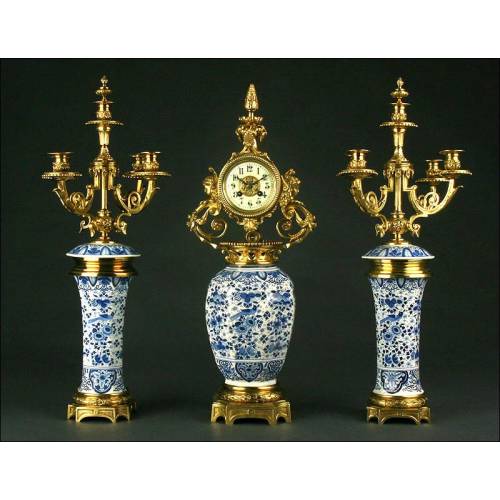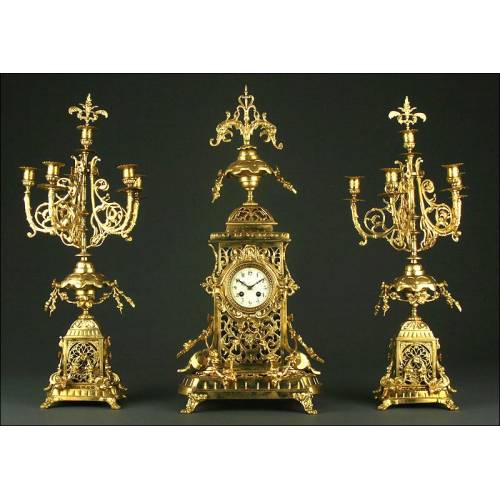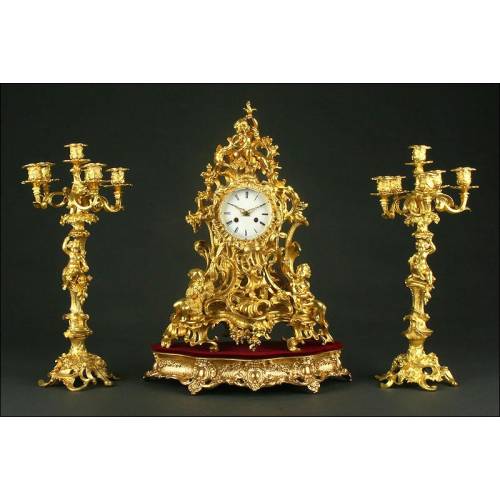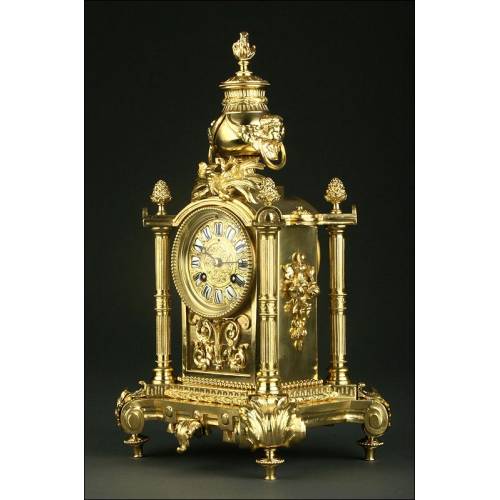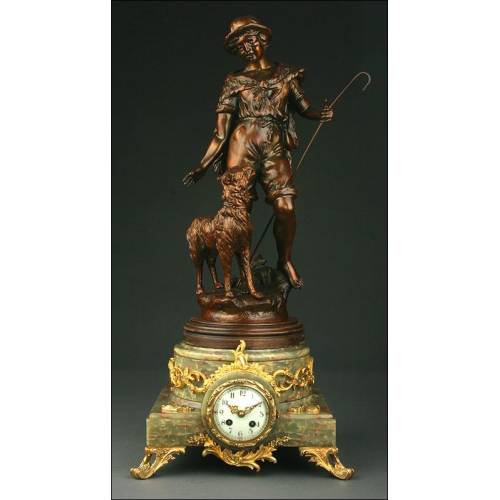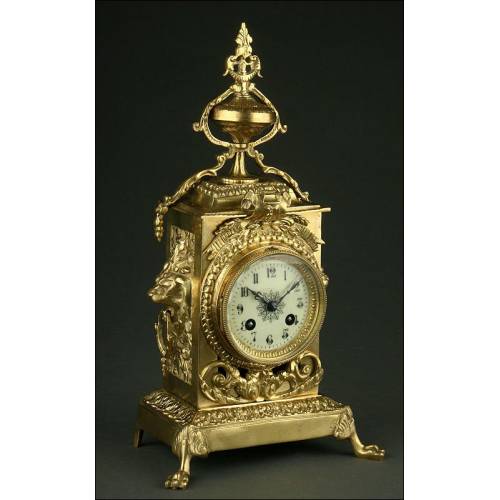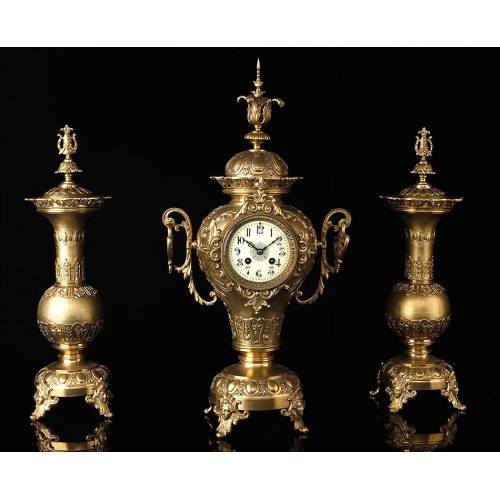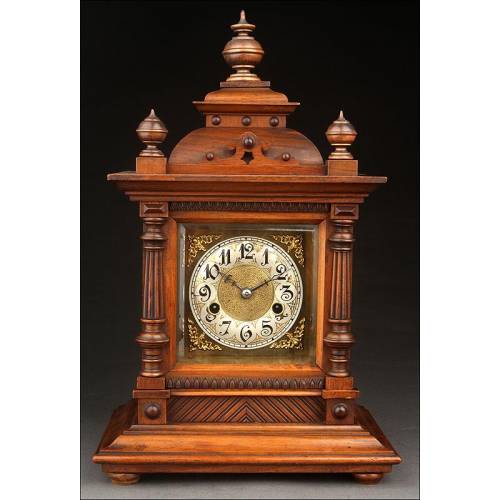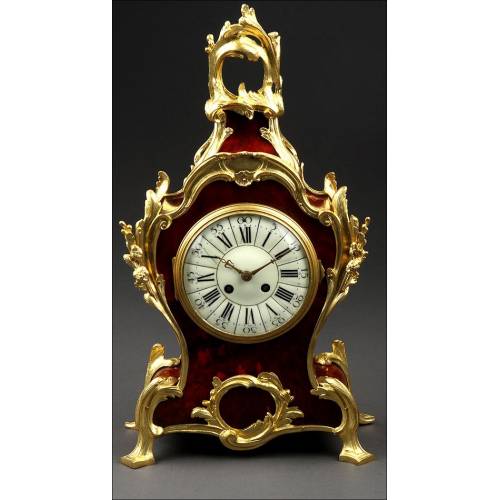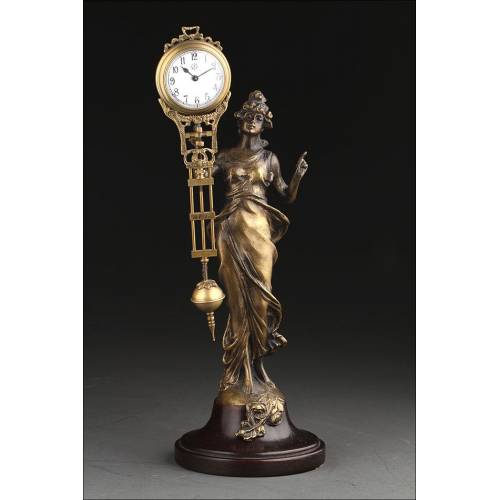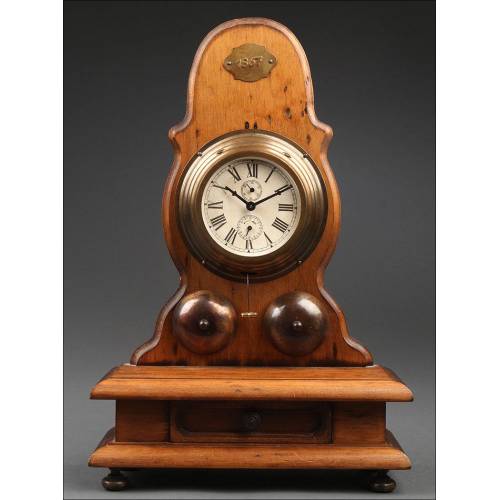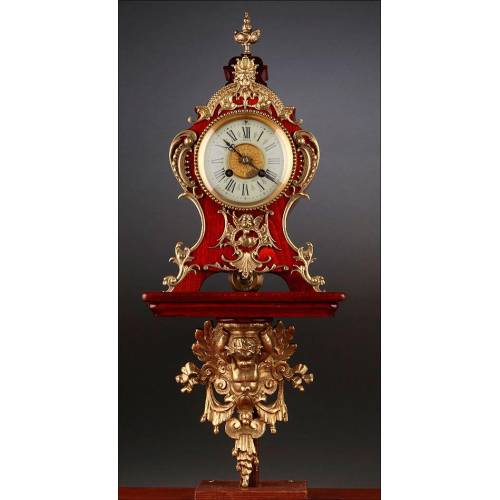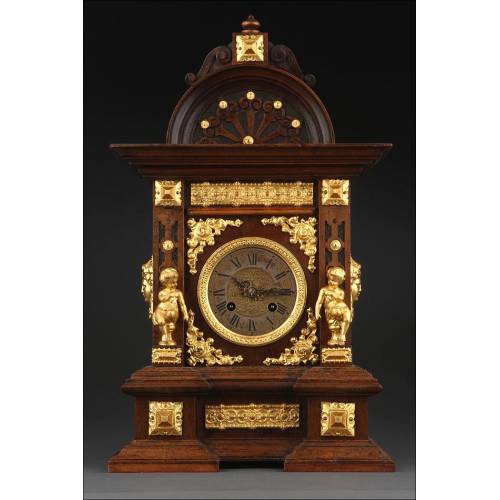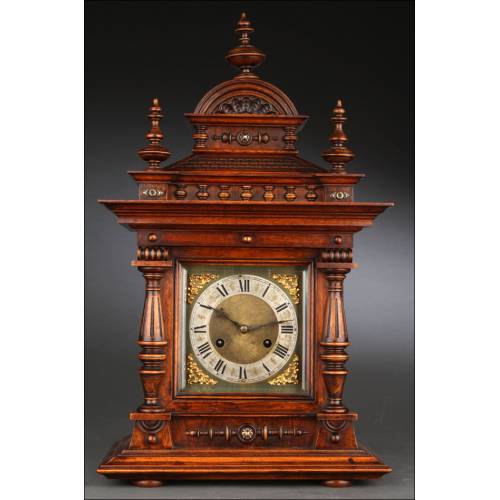677
Important German Porcelain Clock with 8 days Gustav Becker.1900
German Porcelain Clock. 1900
Sold!
This is an important German porcelain Clock with 8 days Gustav Becker machinery from 1900 with two decorative candles. This clock was made in fine polychrome porcelain and it rests upon four majestic legs represented by a fantasy animal, a cock or winged lion with a central faun that is joined to them by a garland. The box, which reminds architecture constructions, is finished in a beautiful baroque cornice surmounted by two decorative items that embrace a decorative vase. The whole outline of the piece is decorated with symmetrical floral motifs in soft several colours, alternating with gold. The face is cream-coloured and shows Roman numerals painted in black enamel, and it appears topped by a beautiful decorative vegetable edge and three decorative lines in gold. The metal hands are decorated with stylized vegetal scrolls. It chimes at oclock hours an also at every half an hour. The two candelabra follow the same stylistic features. We present two griffins supporting a shield, surrounded by beautiful decorative foliage shed subject to four lights. It is in perfect conditions and works perfectly, with the revision made and ready to do work. Every part is the original and the original key is included. Domestic clocks appeared in Europe, particularly in southern Germany, after grandfather clocks. The decoration applied to the cases of mantle clocks could be very different, we found examples where the tortoise has been used, alone or combined with either brass, Boulle technique, but also bone and plating. Since the early eighteenth century great porcelain clocks were produced, whose boxes were often imported from Meissen and Dresden to the rest of Europe, a lot of them were decorated with delicate figures of young girls and floral themes. Gradually, the necessity of getting a porcelain clock at home became more important in countries such as Belgium or the northern part of France, where there was a huge tradition in porcelain products. Such clocks are joined to pieces attached at both sides, made in the same decorative style in order to provide a fullest decoration.. Such clocks were so successful that led to the manufacture of thousands of creative clocks with an extraordinary variety of shapes and different decorations. Pottery was a relatively cheap material because of its tradition in those places, that is why they used this material to decorate the clocks and so, making them accessible to a wide range of public. This kind of clocks, were supposed to show the same grade of innovation that other pieces. The forms of such clocks swung from bronze or marble ones, representing figures or animal shapes, to the most innovative ways as the century went on. This decorative clock will fill of majesty the room in which it will be placed.The clock measures 63 incthat hes high x 30 cm wide x 20 s cm deep. Candelabra measures: height 59 cm x 20 cm base diameter.

